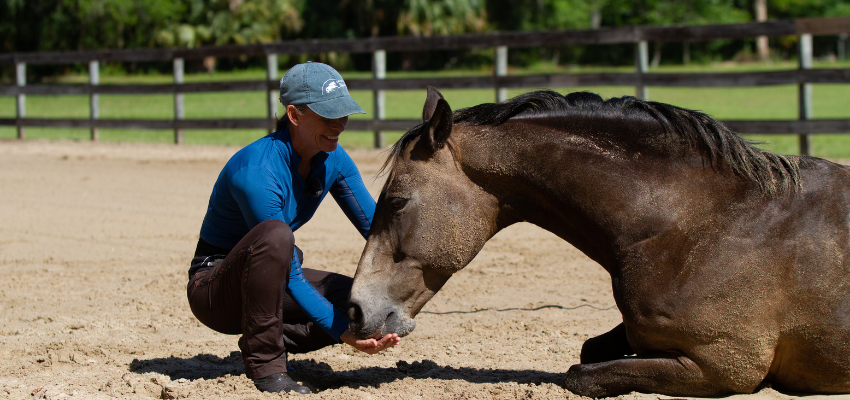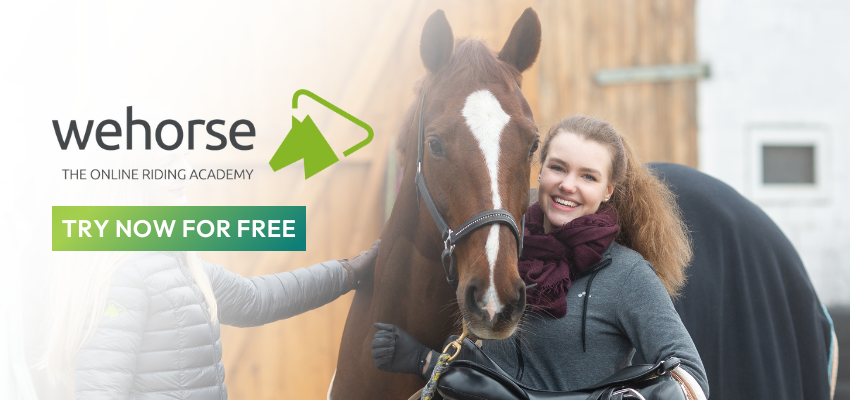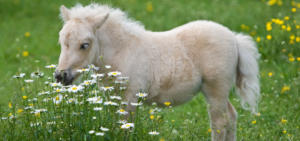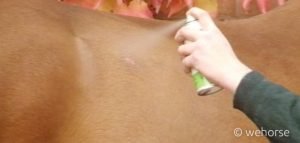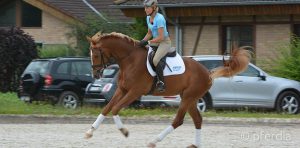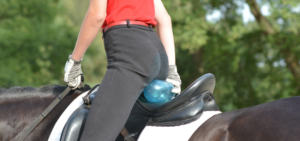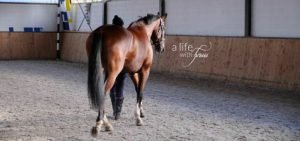Fear when riding develops quickly: one fall, one careless moment, and suddenly fear comes along for the ride. But it doesn’t have to stay that way. In this article, we’re giving you a few rather unusual ways to gain more trust and courage with horses. Trainers Sibylle Wiemer and Kolly Holland-Nell take the fear of riding away from anxious riding students with muscle work, dream journeys, and patience.
Table of Contents
- Why are there more and more fearful riders?
- Where does the fear of riding come from?
- Fear of riding after accidents
- Three ways to deal with fear
- What helps to deal with fear while riding
- Regain (self)confidence
- Courses for fearful horses
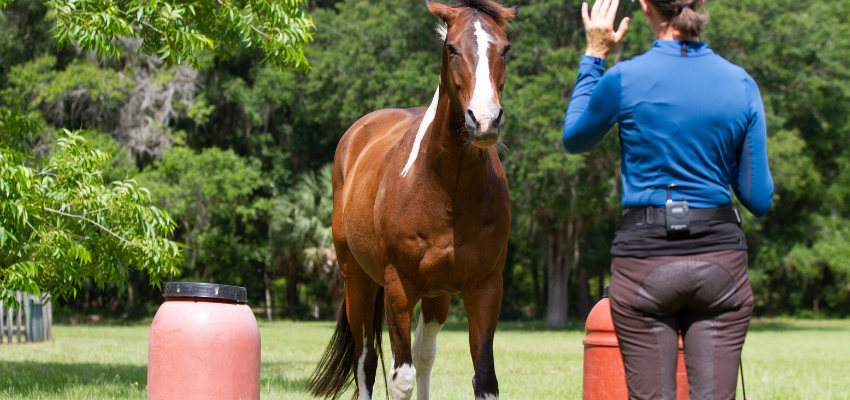
Why are there more and more fearful riders?
In the leisure riding sector, “fear is becoming more and more socially acceptable, as is talking about fear,” says Sibylle Wiemer. Many riders are open about it, which is also related to the fact that there are more and more riders with too much respect for riding. “In my opinion, this is due to the fact that the basic training is too short and superficial,” says the experienced riding instructor. A typical riding education that leads to anxiety is such: A latecomer rides in the group lessons after only a few private lunge lessons. She doesn’t feel comfortable there. That’s why she bought her own horse early on – believing that this would definitely be nicer. But after a short time, the newly minted horse owner is absolutely overwhelmed. This puts her in tricky situations.
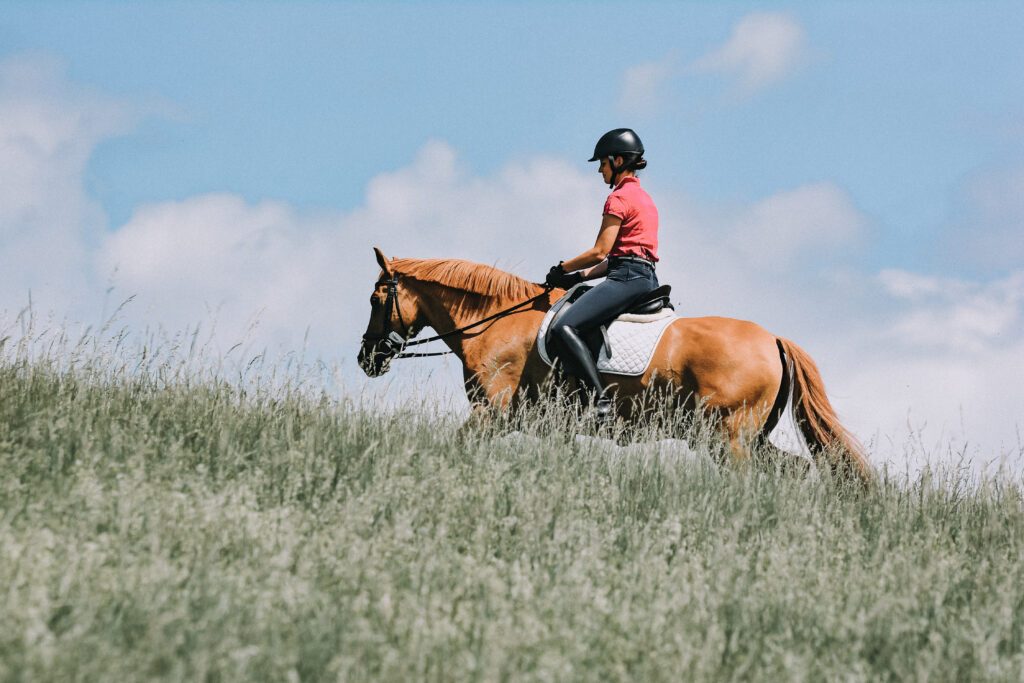
Where does the fear of riding come from?
The perhaps formerly well-behaved horse also becomes anxious, because due to a lack of guidance from humans, it is supposed to make more and more decisions for itself. There are situations where you lose control. Consequence: People are becoming more and more cautious and only ride the horse to a small extent. “I always have horse owners in my clinics who no longer dare to ride faster than walk,” says Sibylle Wiemer.
Fear of riding after accidents
Of course, there is also the fear that comes from trauma. The risk of accidents is underestimated and falls occur. Typical are cases in which “unsuitable riding aids are used and the horse gets stuck, frightened, and throws the person off.” Or the riding instructor himself puts the inexperienced student in danger. “I keep hearing that students are put on horses that are too difficult and that then goes wrong,” says Sibylle Wiemer.
Three ways to deal with fear
If you are a fearful rider yourself, you have three options, says Sibylle Wiemer: “Love it, change it, or leave it!” To “love it” regarding fear means that it can be a convenient excuse. Those who fake fear may not have to admit their inability to control a galloping horse. Perhaps for some, it is easier to say, “I’m afraid so I won’t ride faster,” than to struggle to get better with more riding technique and lots of lessons. That would be an example of the “love it” decision. To “change it” would be more demanding, because “that means I want to change my fear, that’s a big step!,” says Sibylle Wiemer. To “leave it” would mean turning your back on riding completely.
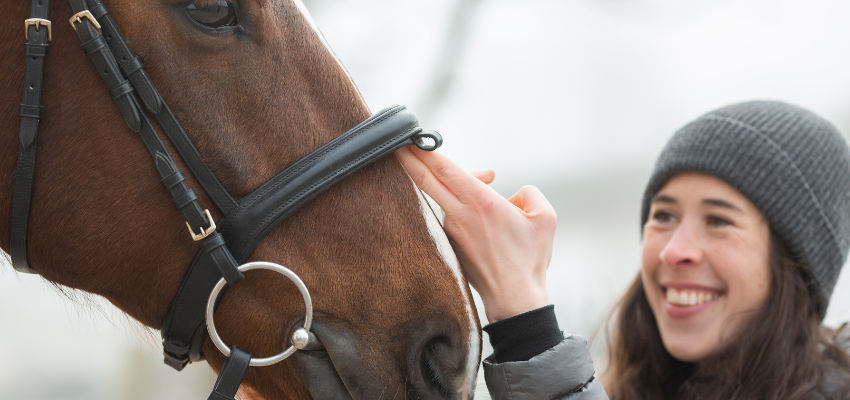
What helps to deal with fear while riding?
To summarize, we have clarified where the fear when riding (or even fear of the horse) can come from and why there are more and more fearful riders: too little riding training, a horse bought too early, and therefore a lack of experience and misjudgments the horse has no security, and not being able to give more leadership, which leads to more scary situations. But how do you counteract this and regain trust in the horse and, above all, in yourself? Here are three rather unusual approaches to anxiety:
1. Fighting fear with the psoas muscle
Sibylle Wiemer likes to work muscularly with riding students to get rid of fear. The psoas muscle plays the central role here. This begins on the inside of the thigh and leads to the iliac crest and to the lumbar spine. It is often shortened because people sit a lot these days. It is important in the area of anxiety because it contracts in the typical crouch position that people initially want to adopt when they are afraid. You can tell this, for example, by the fact that the rider pulls his knees up when afraid. “I practice with the riding students to let go of their legs and lengthen the psoas muscle,” explains Sibylle. This has to happen consciously from the hip.
A simple but effective exercise for this is letting your legs swing back and forth in step with the horse. “The rider can do this even better if he puts his hand on the groin to feel the movement there while swinging.”
2. Having a good attitude against fear
“The second major issue for fearful riders is the connection between posture and emotion,” says Sibylle Wiemer. Someone who sits upright is less anxious than someone who sits slumped on the horse. This is illustrated by the following exercise: “I ask the rider to sit down, bend over, and hang his head. In this posture he should say with full fervor, “today is the happiest day of my life!’” The effect: most of them laugh because their attitude and posture do not match. “Because it doesn’t go together, the body and mind rebel,” says Sibylle Wiemer. “It’s just as hard to sit proudly on a horse and say ‘I’m scared to death'”. This experiment shows the fearful rider how strongly posture and emotion are related. By working on the posture, the emotion can be reached.
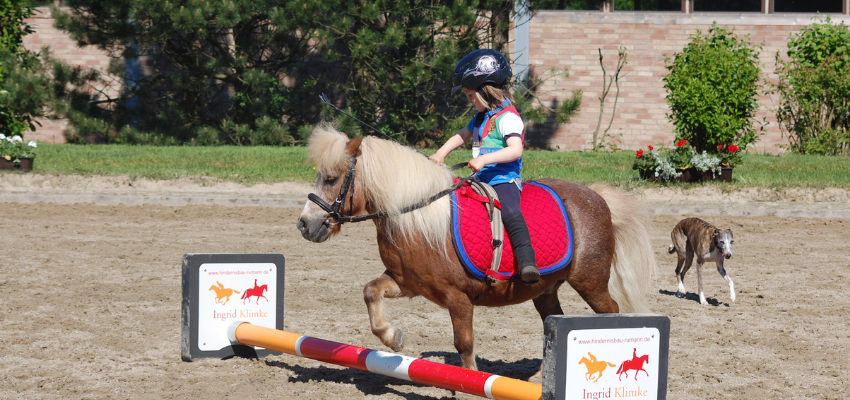
3. Relaxation trips on horseback to fight back against fear
Guided or on the lunge, Sibylle Wiemer also uses body travel to create confidence for fearful riders. “We call that “feel good hours” and it’s almost part of the therapeutic area,” explains the trainer. Riding teacher Kolly Holland-Nell uses a very similar method to give anxious children confidence.
How should one imagine such a relaxation or physical journey? A child is led on a pony. The educator talks about “the colors of the rainbow, for example, or how the children ride through the rainbow and breathe in the colors.” This is often preceded by a phase lasting several weeks or even months in which very anxious children do not sit on horseback at all. The Team Pony Concept works with eight children and two ponies, the children take turns sitting on the ponies for a few minutes. The focus is on group games involving the ponies. Very anxious children are first introduced to the pony again in these games without any riding.
Regain (self)confidence
“I build up security from the ground up. Trust in the horse should first grow here before the child can transfer it to the horse’s back,” explains Kolly Holland-Nell. If a child doesn’t want to ride a horse, “they won’t be persuaded,” she explains. She experiences such fears in students mostly after negative experiences. From time to time, students come to her who have previously experienced something elsewhere that makes them cautious. “It takes more than half a year for the fear to be forgotten,” she says. This time factor is very important. Of course, this applies not only to children but also to adults! On our website you will find comprehensive tips and engaging exercises to strengthen the bond and communication between you and your horse through groundwork.
